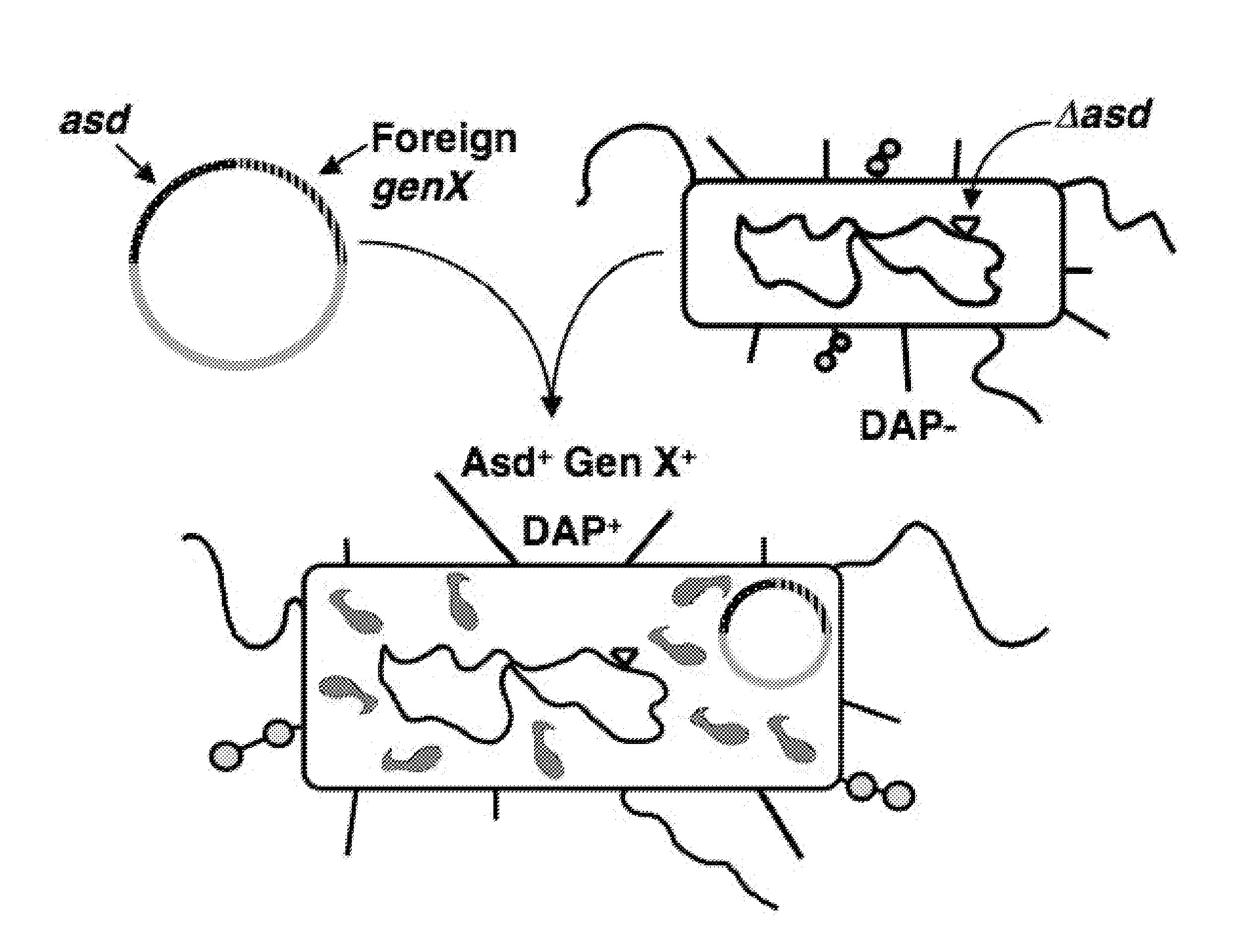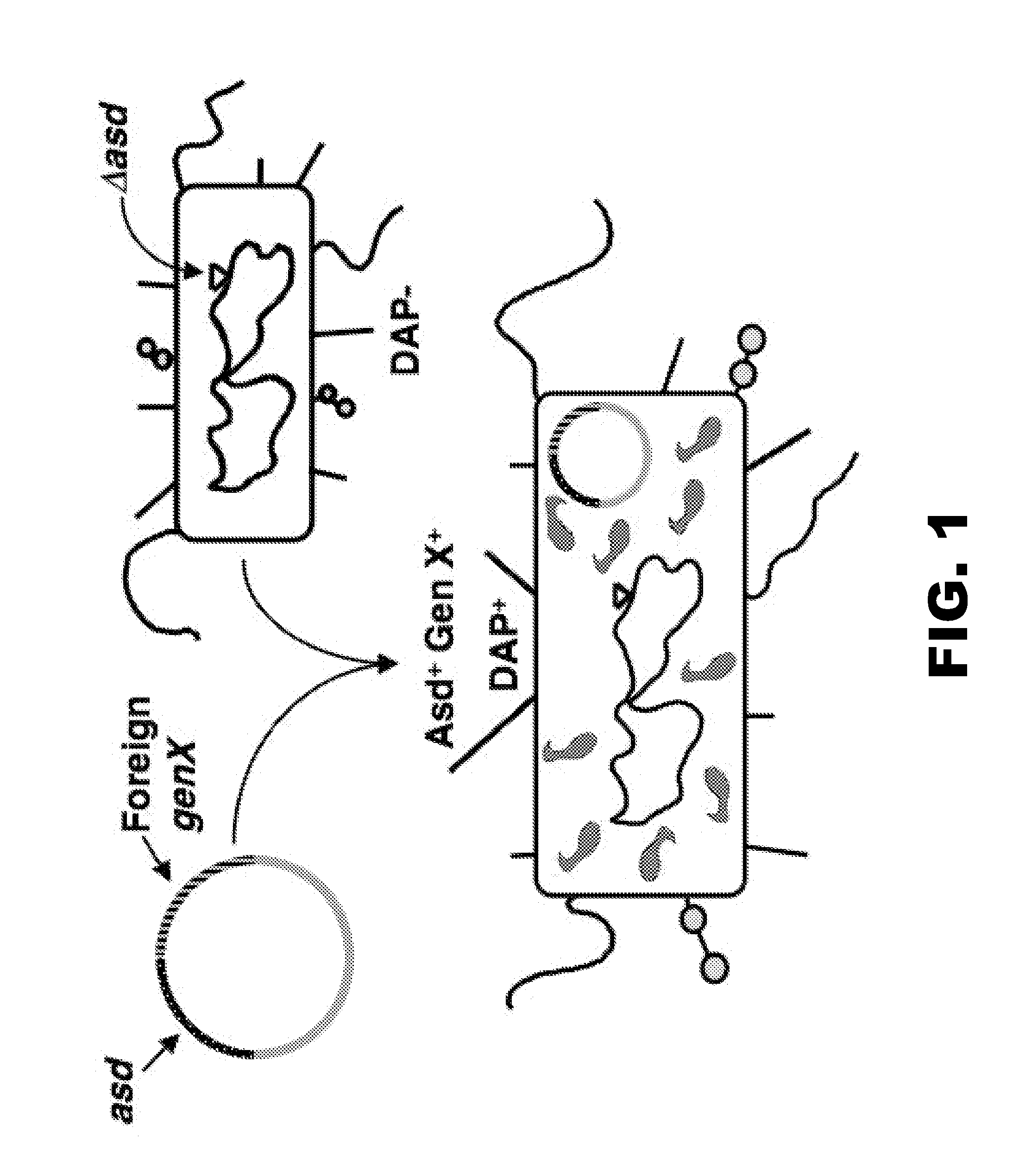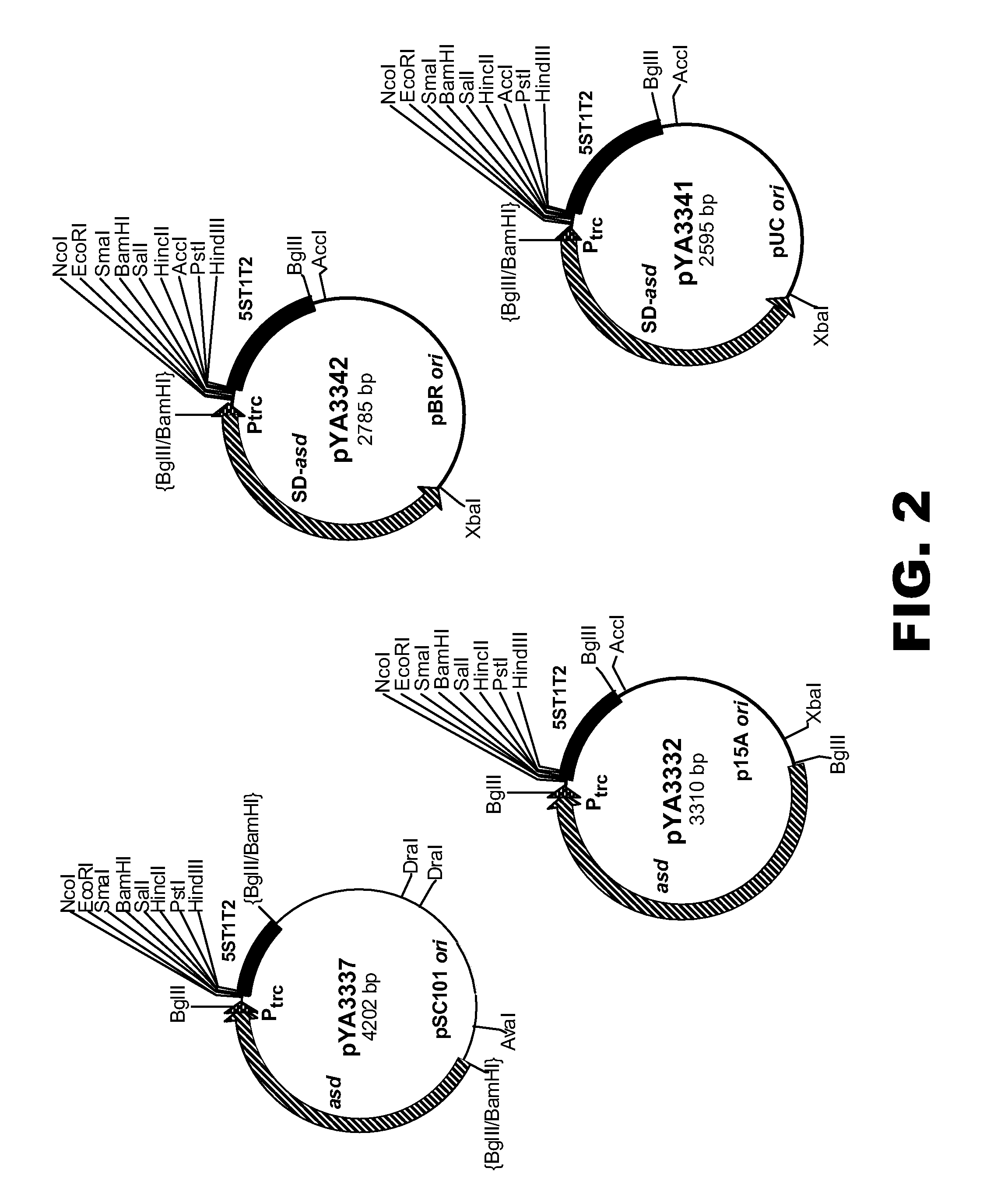Recombinant bacteria comprising vectors for expression of nucleic acid sequences encoding antigens
a technology of nucleic acid sequences and recombinant bacteria, which is applied in the field of recombinant bacteria, can solve the problems of genetic instability, protection immunity against a host, and inability to induce protective immunity
- Summary
- Abstract
- Description
- Claims
- Application Information
AI Technical Summary
Benefits of technology
Problems solved by technology
Method used
Image
Examples
example 1
[0102]In this example, AsdA+ plasmids were constructed to complement a ΔasdA mutation in E. coli strains such as χ6212 and χ6097 and in Salmonella strains such as χ8276 and χ8958 (Table 1). The ΔasdA mutation, eliminates the ability to produce aspartate semialdehyde dehydrogenase, an enzyme essential for the synthesis of diaminopimelic acid (DAP). FIG. 1 illustrates how the balanced-lethal plasmid system works with an asd deletion (Δ) mutation. One or more antigens of interest, such as a protective antigen, were cloned into various AsdA+ plasmids using the multiple cloning site on each Asd+ plasmid. Thus, pYA3493 (FIG. 5) and pYA3620 (FIG. 6) were used to clone a DNA sequence encoding amino acids 3 to 285 including the alpha-helical portion of the PspA protein from Streptococcus pneumoniae strain Rx1. These plasmid constructs (pYA4088 and pYA3802, Table 2) were first introduced into χ6212 and evaluated, using western blot analysis, for stability, and synthesis and secretion of the r...
example 2
[0104]In this example, Salmonella strains with Δalr and ΔdadB mutations were used to eliminate the Salmonella's ability to produce two different alanine racemases, enzymes essential for the synthesis of D-alanine (another unique essential constituent of the peptidoglycan layer of the bacterial cell wall). The DadB+ plasmids with different origins of replication were used as shown in FIG. 3 to express foreign antigens of interest. In one case, the IpxE gene from Francisella tularensis was cloned into the DadB+ vector pYA4014 (FIG. 3) to yield pYA4021 and the S. typhimurium pagL gene into the Asd+ vector pYA3337 (FIG. 2) to yield pYA4019. Both pYA4021 and pYA4019 were then introduced into χ9040 (Table 1) to evaluate structure, function and toxicity of lipid A. The lipid A of the Salmonella LPS is the endotoxin and co-expression of the PagL and LpxE proteins was determined to render lipid A non-toxic but to retain abilities to interact with murine and human TLR4 to recruit innate immun...
example 3
[0105]In this example, the phoP gene has been cloned into the DadB+ vectors pYA4014, pYA4015 and pYA4016 (FIG. 3) to yield pYA3833, pYA3861 and pYA3862, respectively (Table 2). In all cases, the expression of the phoP gene is under the control of the C2 repressor specified by various ΔasdA::TT araC PBAD c2 deletion-insertion mutations as present in χ9048, χ9291, χ9292, χ9340, χ9388, and χ9389 (Table I). When any of these strains possess pYA3833, pYA3861 or pYA3862, and are grown in the presence of arabinose (media is also supplemented with DAP), the C2 repressor protein is synthesized and the PhoP protein is not synthesized. χ9291 and χ9292 also have the ΔrecF and ΔrecJ mutations to minimize if not prevent plasmid-plasmid recombination.
[0106]To facilitate animal studies, these strains were transformed with the compatible Asd+ plasmid pYA3337 (FIG. 2). After oral inoculation of mice, arabinose is absent and C2 repressor ceases to be synthesized and is diluted out at each cell divisio...
PUM
 Login to View More
Login to View More Abstract
Description
Claims
Application Information
 Login to View More
Login to View More - R&D
- Intellectual Property
- Life Sciences
- Materials
- Tech Scout
- Unparalleled Data Quality
- Higher Quality Content
- 60% Fewer Hallucinations
Browse by: Latest US Patents, China's latest patents, Technical Efficacy Thesaurus, Application Domain, Technology Topic, Popular Technical Reports.
© 2025 PatSnap. All rights reserved.Legal|Privacy policy|Modern Slavery Act Transparency Statement|Sitemap|About US| Contact US: help@patsnap.com



